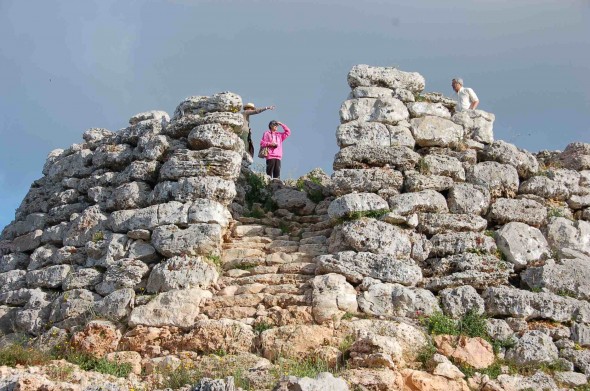An article appeared recently from National Geographic about the first conference of the International Committee on Archaeological Heritage Management and the state of World Heritage Sites. There is no doubt that Tacky Tourists are everywhere, but much of the extensive damage outlined in this article isn’t caused by intentionally destructive tourists but is rather the result of poor site management and insufficient support.
The International Committee on Archaeological Heritage Management, or ICAHM, held its first conference on how to manage the world’s myriad archaeological World Heritage sites. This wildly varied array of places encompasses many of the most celebrated sites of human cultural accomplishment and catastrophe—everything from the pyramids and Roman fortifications to Mongol-era tombs and prehistoric rock art. ICAHM’s key job is to advise the World Heritage Committee about new sites proposed for the famous list.
…
Too many countries are rushing to use the past—their heritage sites—for present purposes. Willems sharply criticized the way that sites are proposed and awarded World Heritage inscription. According to the World Heritage Convention, an international treaty, sites should be awarded a place on the list based on solid scientific and academic reasoning. Not happening, said Willems. The World Heritage Committee has been approving too many applications based on economic and “radically political” expediency.
…
When it comes to historic and archaeological sites, though, a blind grab for tourism is playing with fire. Without care, “loved-to-death” syndrome is a real threat. Listen to what ICAHM’s other co-president, Dr. Douglas Comer of Baltimore, Maryland, had to say about one ancient site he knows well: Petra, Jordan. Once such a site is damaged, he stressed, the physical archaeological record is gone forever.
…
Petra had about 45,000 visitors in 1985,” Comer told the meeting. “It’s now close to 800,000.” Tourism-related construction at Petra destroyed Nabataean terra cotta pipes more than 2,000 years old. The sandstone seats in the Theatre have survived two millennia, but in the past two decades so many tourists have sat on them that they have worn away the stonemasons’ marks. History wiped by butts. Overall, abrasion from visitor traffic has removed well over a foot of sandstone from the interior of Petra’s most famous monument, Al-Khazna, seen as the repository of the Holy Grail in an Indiana Jones movie. Development at nearby Wadi Musa created impermeable pavement, which in turn floods sandstone with too much water and erodes it. Donkeys carrying tourists gradually destroyed the ancient Nabataean steps. The practice has been stopped—too late for the steps. In a common pattern, USAID and others have put over $30 million toward supporting tourism to Jordan, but comparatively little has gone to preservation.
…
The extent to which ICAHM is effective will depend on participants’ ability to focus on action and not just academic theory. One late-session speaker, after he was done lambasting the inscription and management of World Heritage sites in Ethiopia, pointed out that the conference’s earlier “Social Action” set of 15-minute presentations did not live up to their billing. “Social action was mentioned in the last 30 seconds.”
…
But there’s another, major problem with ICAHM. The scientists are expected to do all this work for free.
This was the third of Comer’s calls to action: Get support. In recent decades we have seen millions of dollars spent to attract tourists, and pennies to protect what they travel to see.
This last point is one of the most telling about the short-sighted nature of much tourism. These ancient sites simply cannot handle the immense pressure of the crowds and clouds of humid breath that invade them daily in the modern era of mass tours. As World Heritage Sites, these global treasures should absolutely be visited and enjoyed, but they are treasures and should be treated as such.
(Photo: Jonathan Tourtellot)
Unfortunately, between the lack of restoration/stabilization funding for these sites and an annoyingly common type of tourist who treats such gifts from antiquity as though they were their own personal Disney World, rampant visitation has wrecked immense havoc in many places. This is a price we can ill afford to pay.
Judging from what I’ve seen this week, ICAHM knows it has a long way to go, as does the World Heritage program, as do we all. Otherwise the tangible story of our species crumbles, one dislodged stone at a time, and with it, the knowledge of who we are.


